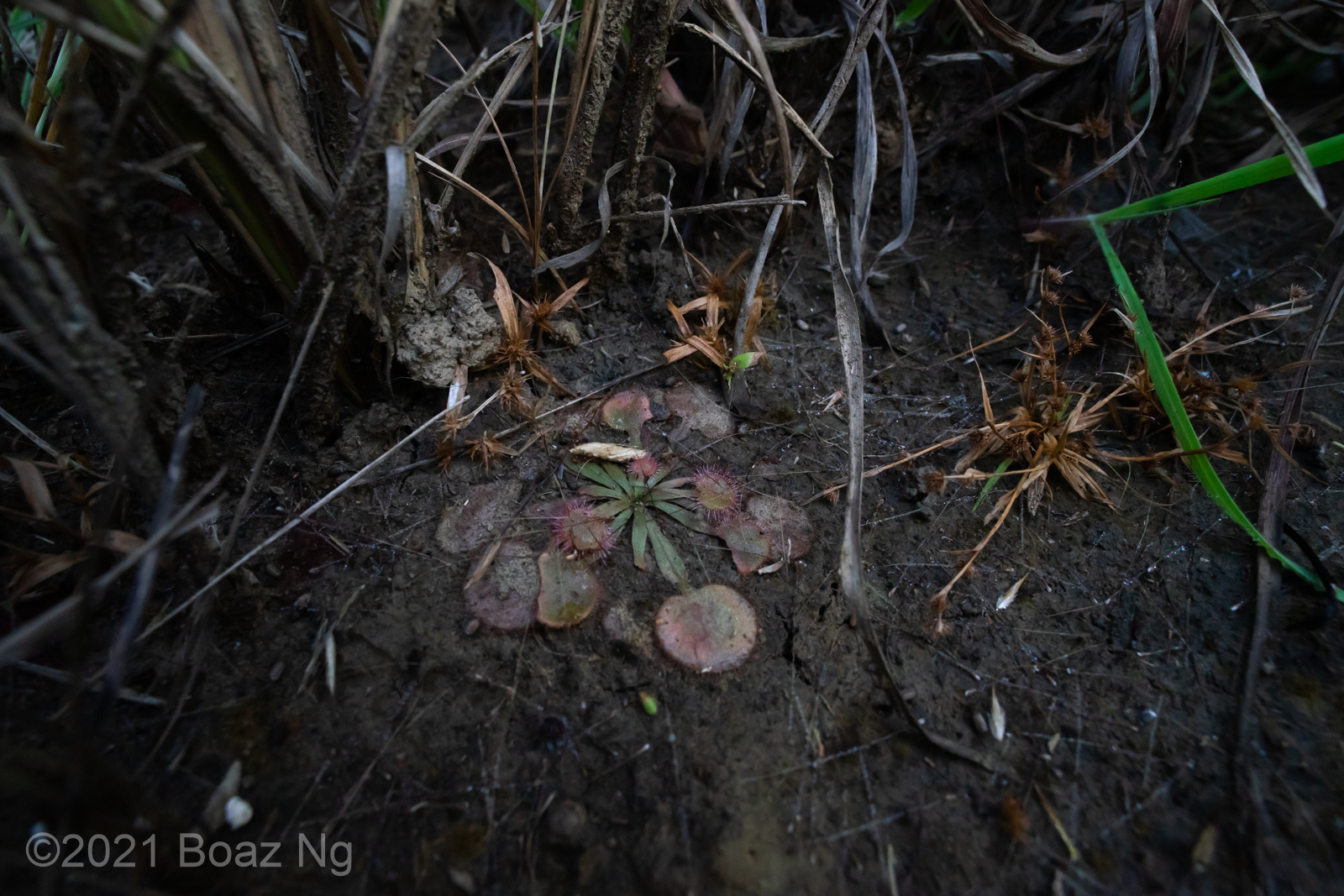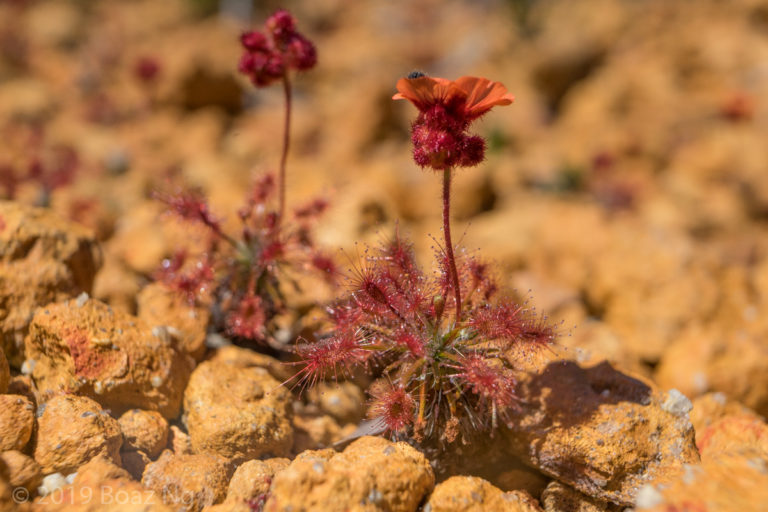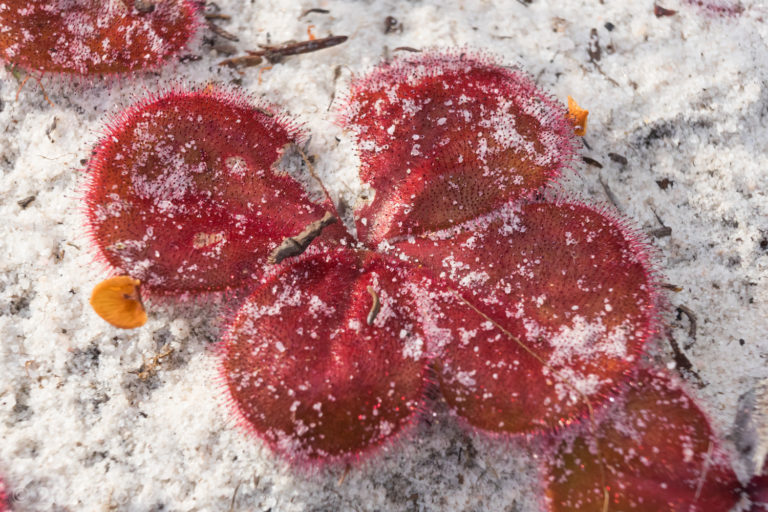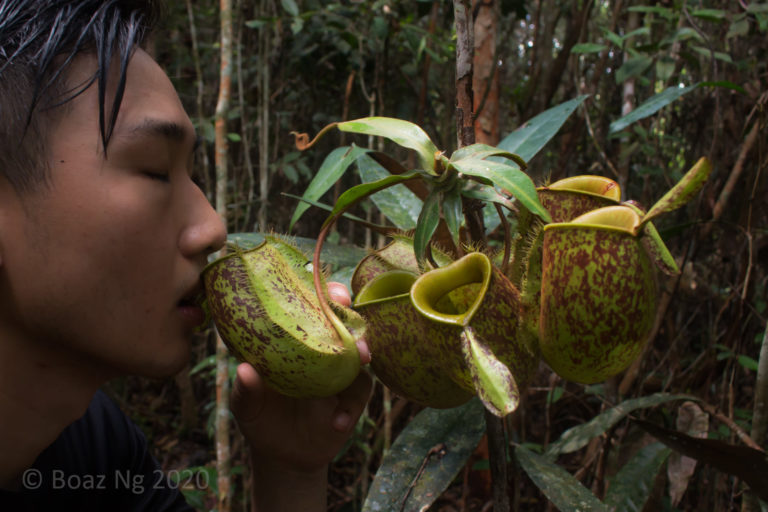Drosera falconeri was first reported in 1980 from a collection near the Finiss River in the Top End of the Northern Territory, where the pH of the soil of the region was described as having a pH of around 8.1 At least one academic publication has cited this report in saying that the species grows on calcareous, alkaline soils.2 However, it is unclear whether the pH value of the soil the plants were growing in was directly measured or just a generalisation from the geology of the area. Given that Drosera are generally known to grow in substrates low in minerals, the claim that D. falconeri grows in alkaline soils warrants specific investigation.
Methods
Site selection and soil sampling
Two sites situated approximately 600 m apart on the floodplain of a tributary of the Blackmore River in the locality of Weddell were chosen due to accessibility and the presence of D. falconeri (Fig 1). The sites were sampled in May, at the start of the dry season when the soil is still slightly moist but floodwaters had receded. Approximately 2g of surface soil directly adjacent to D. falconeri plants was collected in sterile polypropylene containers. The soil was stored at ambient temperatures for one week prior to analysis.
Measurement of pH
The soil was mixed with 5 parts (w/v) ultrapure water and agitated on a rotary mixer for one hour. Particulate matter was pelleted with centrifugation. The pH of the supernatant was measured with a benchtop glass electrode pH meter (Denver Instrument, UB-10). pH indicator strips (EMD, 1.09590) were also used to qualitatively verify the result.
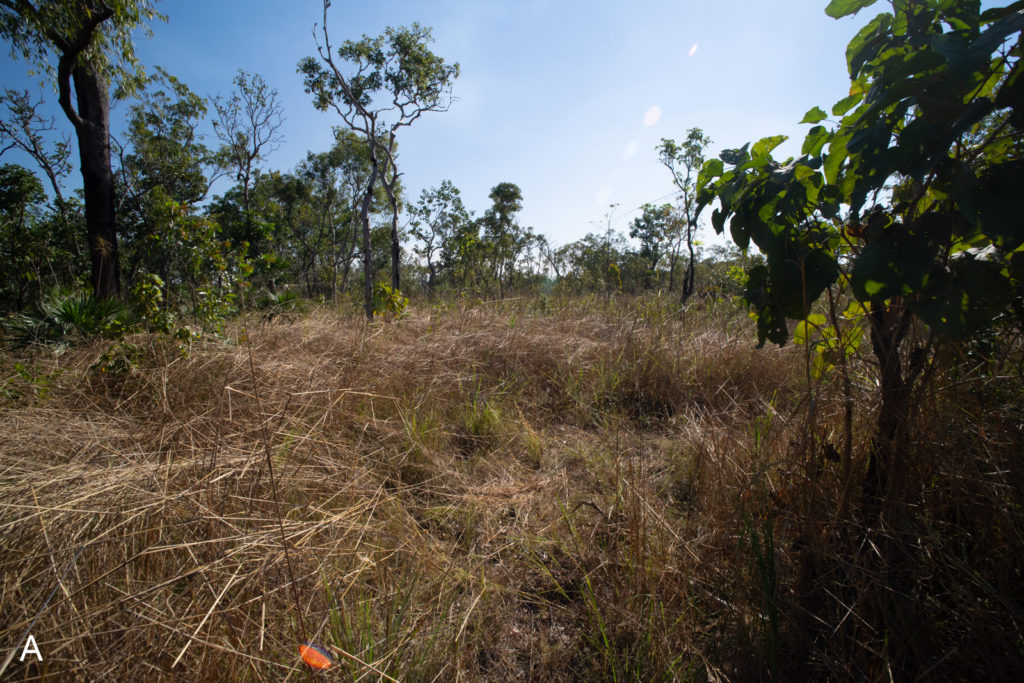
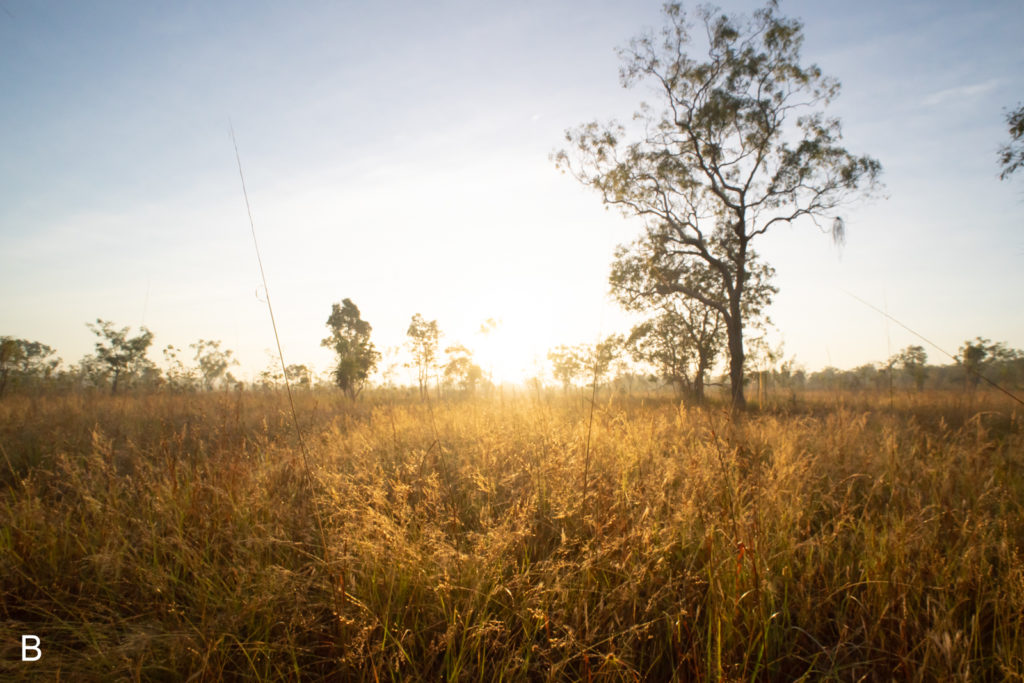
Results
Drosera falconeri grows in acidic substrates
Sample A – pH 4.88
Sample B – pH 5.2
Both soil samples were low in pH, with an average value of 5.04 (Fig 2). Both sites were similar in general geography with silty topsoil that was covered densely with grasses. The colour of the soil was different between sites, with site A being grey B being brown (Fig 1).
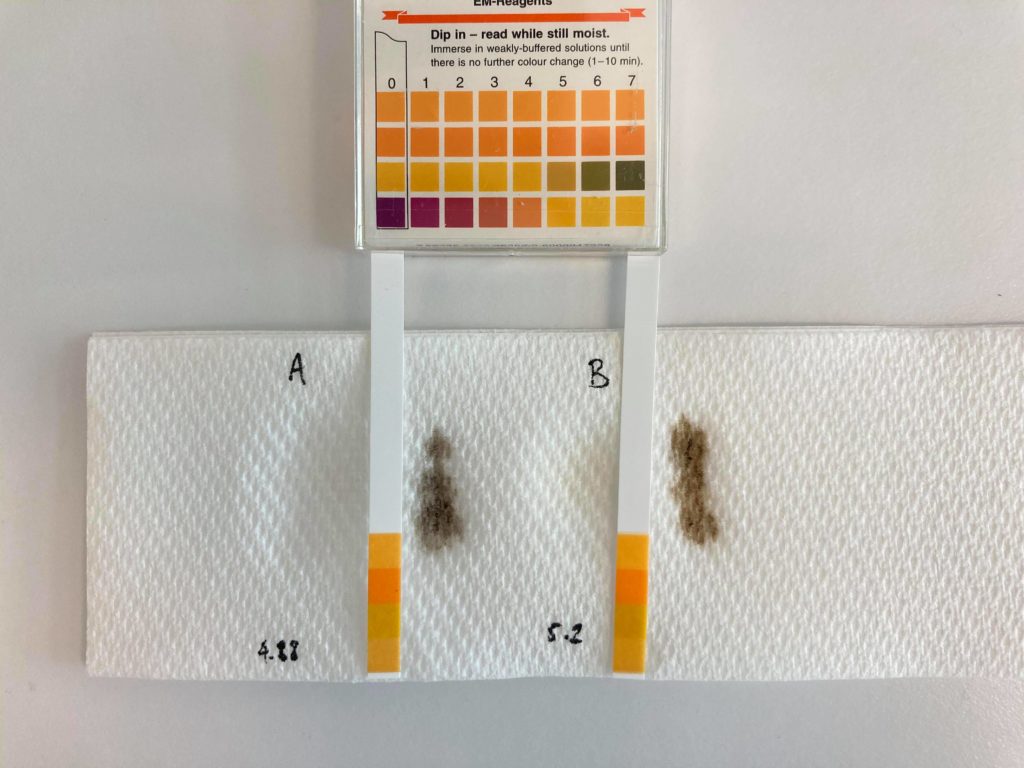
Discussion
Drosera are generally known to grow in acidic substrates that are devoid of substantial amounts of minerals. This report confirms that D. falconeri also grows in acidic substrates, with an acidic soil pH measurement at two separated sites within the same general vicinity.
The notion of a generally calcareous region may stem from the carbonate aquifers contained within a subterranean dolomite layer in the distribution of the species.3 Measurements of bore water indicates that is high in calcium with TDS exceeding 200 mg/mL.4 However it should be noted that the plants grow in the shallow topsoil of the alluvial floodplain well above the dry-season level of the aquifer and that calcareous deposits rarely extend to the surface in the region. The seasonal hydrology during the growing season of D. falconeri should also be considered, with annual flooding events from rainfall that would dilute out any accumulated salts. The results of the soil sampling in this report, along with a consideration of the hydrology in the distribution of D. falconeri makes it unlikely that the initial assertion that the species grows in alkaline soils is correct.
- Tsang P 1980 A new Drosera from the top end of Australia. Carniv. Plant Newslett. 9, 46–48.
- Adlassnig, W., M. Peroutka, H. Lambers, and I. K. Lichtscheidl. 2005. The roots of carnivorous plants. Plant and Soil, 274: 127-140.
- https://denr.nt.gov.au/__data/assets/pdf_file/0016/261061/soils-of-the-nt-factsheet.pdf
- https://frackinginquiry.nt.gov.au/submission-library?a=433205

